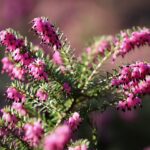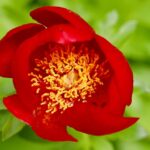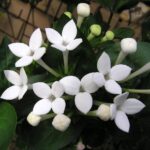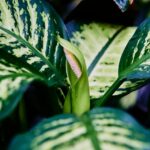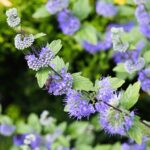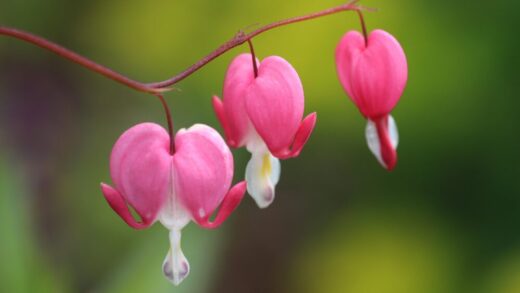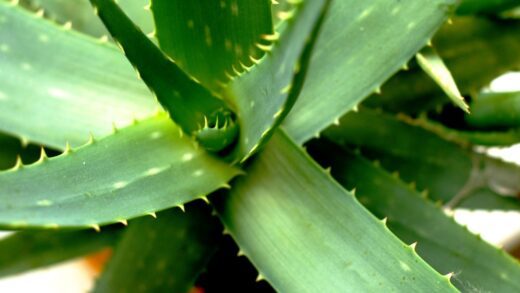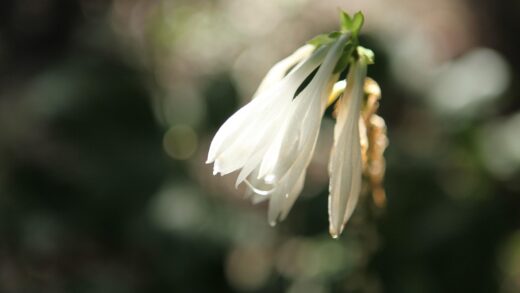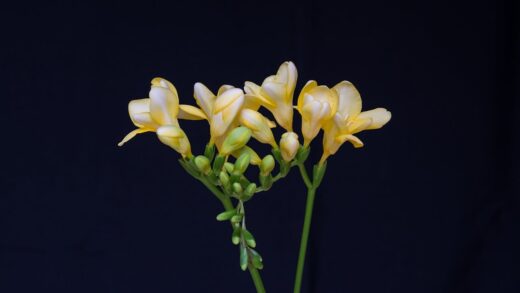While bouvardia is a relatively robust plant when provided with proper care, it is not immune to the challenges posed by various diseases and pests. Proactive monitoring and early intervention are the cornerstones of effective pest and disease management, ensuring that minor issues do not escalate into major threats to the plant’s health. Many problems can be directly linked to suboptimal growing conditions, such as poor air circulation, overwatering, or plant stress, which can make the bouvardia more susceptible to attack. By familiarizing yourself with the common culprits and their symptoms, you can be well-prepared to protect your cherished plant and maintain its vigor and beauty. A healthy, well-cared-for plant is always the best defense against any potential afflictions.
Fungal diseases are among the most common problems affecting bouvardia, particularly when the plant is grown in overly moist or humid conditions with inadequate air circulation. Root rot, typically caused by fungi like Pythium or Phytophthora, is perhaps the most serious threat and is almost always a result of overwatering and poorly draining soil. The symptoms appear as wilting, yellowing leaves, and stunted growth, which can be confusingly similar to underwatering. However, an inspection of the roots will reveal them to be brown, mushy, and decaying instead of firm and white.
Another prevalent fungal issue is powdery mildew, which appears as a distinctive white, powdery coating on the surfaces of leaves, stems, and buds. This disease thrives in conditions of high humidity and moderate temperatures and can inhibit photosynthesis, eventually causing leaves to yellow and distort. Botrytis blight, or gray mold, is another moisture-related fungus that often attacks flowers and buds, causing them to develop brown spots and a fuzzy gray growth before turning to mush. Both of these foliar diseases can be managed by improving air circulation around the plant, avoiding overhead watering, and removing affected parts promptly.
Bacterial diseases, though less common than fungal ones, can also affect bouvardia. Bacterial leaf spot, for example, can cause water-soaked lesions on the foliage that may be surrounded by a yellow halo. These spots can eventually enlarge, dry out, and cause the leaf to drop. Bacterial infections often enter the plant through small wounds or natural openings and are spread by splashing water. Therefore, careful handling to avoid injuring the plant and watering at the base rather than on the foliage can significantly reduce the risk of infection.
Preventative care is the most effective strategy for disease management. This includes using a sterile, well-draining potting mix, providing adequate spacing between plants to promote air movement, and following proper watering practices. Regularly removing any dead or decaying plant debris from around the base of the plant can also help to eliminate potential breeding grounds for pathogens. If a disease does take hold, fungicides can be effective, but they should be used as a targeted treatment in conjunction with correcting the underlying environmental conditions that allowed the disease to develop in the first place.
Common sap-sucking pests
Bouvardia plants can be a target for several common sap-sucking pests, which feed by piercing the plant’s tissues and extracting the nutrient-rich sap. Aphids are one of the most frequent offenders. These small, pear-shaped insects often congregate in clusters on new growth, tender stems, and the undersides of leaves. Their feeding can cause leaves to curl, yellow, and become distorted. Aphids also excrete a sticky substance called honeydew, which can lead to the growth of sooty mold, a black fungus that coats the leaves and can interfere with photosynthesis.
Whiteflies are another significant pest, especially in greenhouse or indoor environments. These tiny, moth-like insects will fly up in a cloud when a plant is disturbed. Like aphids, they tend to gather on the undersides of leaves, where they feed on sap and lay their eggs. Infestations can lead to yellowing, stippling, and eventual leaf drop. Whiteflies are notoriously difficult to control due to their rapid life cycle, and management often requires persistent and repeated treatments to target all life stages, from egg to adult.
Spider mites, which are technically arachnids rather than insects, are a particularly troublesome pest in warm, dry conditions. They are incredibly small and often go unnoticed until their population is large and damage is visible. They cause a fine, silvery stippling on the leaves, and in heavy infestations, you will see fine webbing, particularly around the leaf axils and on the undersides of the leaves. Spider mite damage can cause leaves to become yellow or bronzed before they dry up and fall off, severely weakening the plant.
Controlling these sap-sucking pests begins with regular inspection. Catching an infestation early makes it much easier to manage. For small-scale problems, a strong jet of water can be used to physically dislodge the pests from the plant. For more established colonies, applications of insecticidal soap or horticultural oil, such as neem oil, can be very effective. These products work by smothering the soft-bodied insects and must be applied thoroughly, ensuring complete coverage of all plant surfaces, especially the undersides of the leaves where the pests hide.
Fungal infections and their management
Root rot stands as the most formidable fungal disease for bouvardia, originating from waterlogged soil that suffocates the roots and creates a breeding ground for pathogenic fungi. The prevention of root rot is entirely dependent on cultural practices. It is essential to use a potting medium with sharp drainage, ensure the container has ample drainage holes, and, most critically, to allow the top layer of soil to dry out between waterings. Once root rot has set in, it is very difficult to reverse. The only chance of saving the plant involves unpotting it, trimming away all of the affected brown, mushy roots with a sterilized tool, and repotting it in fresh, dry soil.
Powdery mildew is a foliar fungus that is easily identified by the white, talc-like patches it forms on leaves. It is most prevalent in environments with poor air circulation and high humidity. Management should start with cultural controls. Pruning the plant to open up its structure and improve airflow can make a significant difference. Watering the plant in the morning at the soil level allows the foliage to remain dry, which makes conditions less favorable for fungal spores to germinate. If the infection is severe, fungicides containing sulfur or potassium bicarbonate can be effective treatments.
Botrytis blight, or gray mold, is another disease that thrives in cool, damp conditions. It often starts on spent flowers or dying leaves before spreading to healthy tissue, causing brown, water-soaked spots that quickly develop a characteristic fuzzy gray mold. The key to controlling botrytis is sanitation and moisture management. Promptly remove any faded blooms and dead leaves from the plant and the soil surface. Avoid overhead watering, and if possible, reduce the ambient humidity or increase air circulation to help keep the plant’s surfaces dry.
To prevent a wide range of fungal issues, a proactive approach is always best. When you first acquire a plant, inspect it carefully for any signs of disease. Always use clean pots and sterile potting mix, especially when propagating or repotting. Providing the bouvardia with its ideal growing conditions—proper light, water, and nutrition—will keep the plant strong and vigorous, making it inherently more resistant to fungal pathogens. A healthy plant is far less likely to succumb to disease than one that is stressed by poor care.
Bacterial and viral diseases
While less frequent than fungal problems, bacterial diseases can still pose a threat to bouvardia. Bacterial leaf spot is a primary concern, characterized by dark, water-soaked spots on the leaves, which may be angular in shape and are often bounded by the leaf veins. These spots can enlarge and merge, and sometimes a sticky bacterial ooze may be present under very humid conditions. As the disease progresses, the centers of the spots may dry out and fall away, giving the leaf a “shot-hole” appearance.
The management of bacterial diseases relies heavily on prevention, as there are few effective chemical treatments available to home gardeners. Bacteria are easily spread by splashing water from rain or irrigation, so it is crucial to water the soil directly and keep the foliage as dry as possible. Sanitize your pruning tools with rubbing alcohol or a bleach solution between cuts, especially if you are working with an infected plant, to avoid spreading the bacteria to healthy tissue. Promptly remove and destroy any infected leaves to reduce the amount of inoculum present.
Viral diseases in plants are akin to viruses in animals; they are systemic infections that can be very difficult to treat. Symptoms can be varied and may include mosaic patterns of light and dark green on the leaves, mottling, leaf distortion, ringspots, and overall stunted growth. Viruses are typically transmitted by pests, such as aphids, or through vegetative propagation from an infected mother plant. There is no cure for a plant virus, so prevention is the only effective strategy.
Because viruses are often spread by sap-sucking insects, controlling pest populations on your bouvardia is your primary defense against viral infections. If you identify an insect infestation, treat it promptly before they have a chance to spread potential pathogens. Furthermore, when taking cuttings for propagation, it is absolutely essential to select material only from vigorous, healthy-looking parent plants that show no signs of disease. If a plant is confirmed to have a virus, it should be removed and destroyed to prevent it from acting as a source of infection for other nearby plants.
Integrated pest management strategies
Integrated Pest Management (IPM) is a holistic and environmentally sensitive approach to dealing with pests and diseases. Rather than simply reaching for a chemical spray at the first sign of trouble, IPM focuses on long-term prevention and uses a combination of different control methods. The first and most important step in any IPM program is regular monitoring. Carefully inspect your bouvardia plants at least once a week, checking the tops and bottoms of leaves, stems, and flowers for any early signs of pests or disease.
Cultural controls form the foundation of an effective IPM strategy. This involves creating a growing environment that is optimal for the bouvardia but unfavorable for pests and pathogens. This includes providing the correct light, water, and nutrient levels to keep the plant healthy and stress-free. It also means practicing good sanitation, such as removing dead leaves and weeds, and ensuring good air circulation through proper spacing and pruning. A healthy plant is naturally more resistant to many problems.
If a pest problem does arise, IPM prioritizes the use of mechanical and biological controls before resorting to chemicals. Mechanical controls include actions like hand-picking larger pests such as caterpillars, using a strong spray of water to knock off aphids, or setting up sticky traps to catch flying insects like whiteflies. Biological control involves using natural enemies of the pests, such as releasing ladybugs to eat aphids, which can be a highly effective and natural solution, especially in a greenhouse setting.
If cultural, mechanical, and biological methods are not sufficient to control a pest or disease outbreak, IPM allows for the targeted use of the least-toxic chemical controls available. This might involve using horticultural oils or insecticidal soaps, which have a lower impact on beneficial insects and the environment compared to broad-spectrum synthetic pesticides. The goal is to manage the pest population to an acceptable level rather than attempting to eradicate it entirely, thus maintaining a more balanced and sustainable garden ecosystem.

